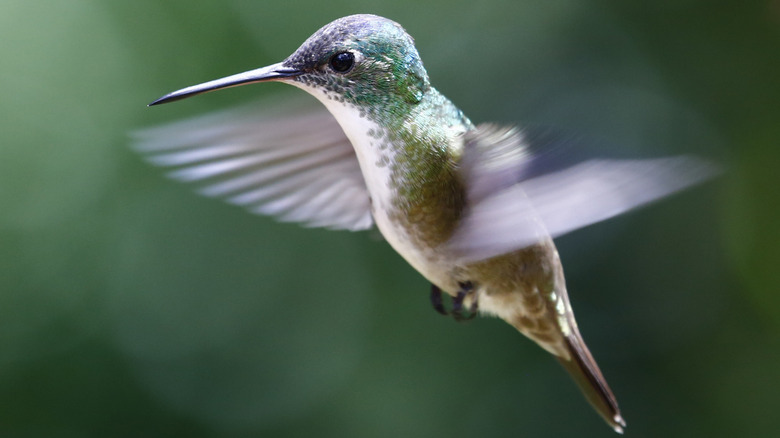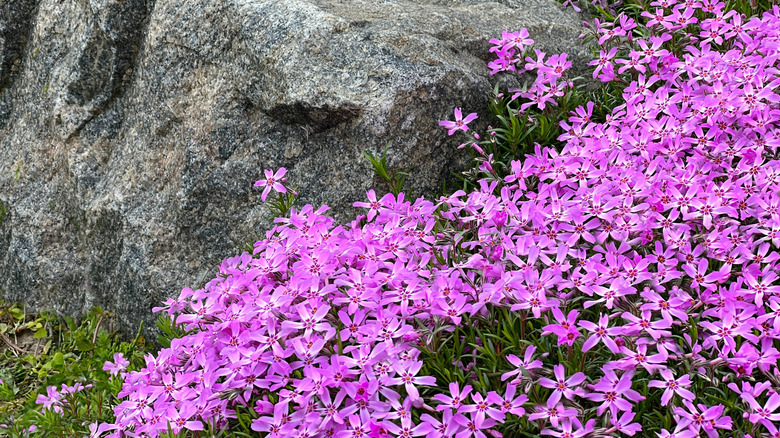Hummingbirds Will Flock To The Garden With This Flowering Ground Cover
Ground covers have a range of important functions in the garden. Not only do ground cover plants enhance the landscape's beauty by covering soil that would otherwise be bare, but they also prevent erosion and limit weed growth. In some cases, they can even do more. One of the best ground cover options, creeping phlox (Phlox stolonifera) or (Phlox subulata), can also help to attract hummingbirds to your garden.
Both species are surprisingly huge hits with hummingbirds. And because they are both quite short — with Phlox stolonifera reaching about a foot tall, and Phlox subulata growing to only about 6 inches high – they're perfect ground cover plants. Phlox subulata can grow far wider than its counterpart, with a single plant spreading up to 3 feet, while Phlox stolonifera has a faster growth rate and can handle some light foot traffic. They also have a range of flower colors, but if your main goal is to attract hummingbirds, you may want to opt for a cultivar that has red blooms. 'Red Wings' creeping phlox (Phlox subulata 'Red Wings') could be a good option for this.
Perks and preferences of creeping phlox ground cover
Both species of creeping phlox are native to North America. While Phlox stolonifera is only hardy in USDA Hardiness Zones 5 through 8, Phlox subulata is hardy all the way from zone 3 through 9. Creeping phlox species thrive in full sun, but Phlox stolonifera also grows well in part shade. They both appreciate moist but well-draining soil, though they are quite drought-tolerant once established and make great rock garden additions.
While you can use creeping phlox species as ground covers in any sunny and well-draining garden, they're especially good additions to pollinator gardens. In addition to hummingbirds, butterflies also adore creeping phlox. Phlox stolonifera can even be planted around black walnut trees, where many other plants will be killed by the walnut tree. You don't have to worry about deer bothering your creeping phlox either, as both species are deer-resistant.

